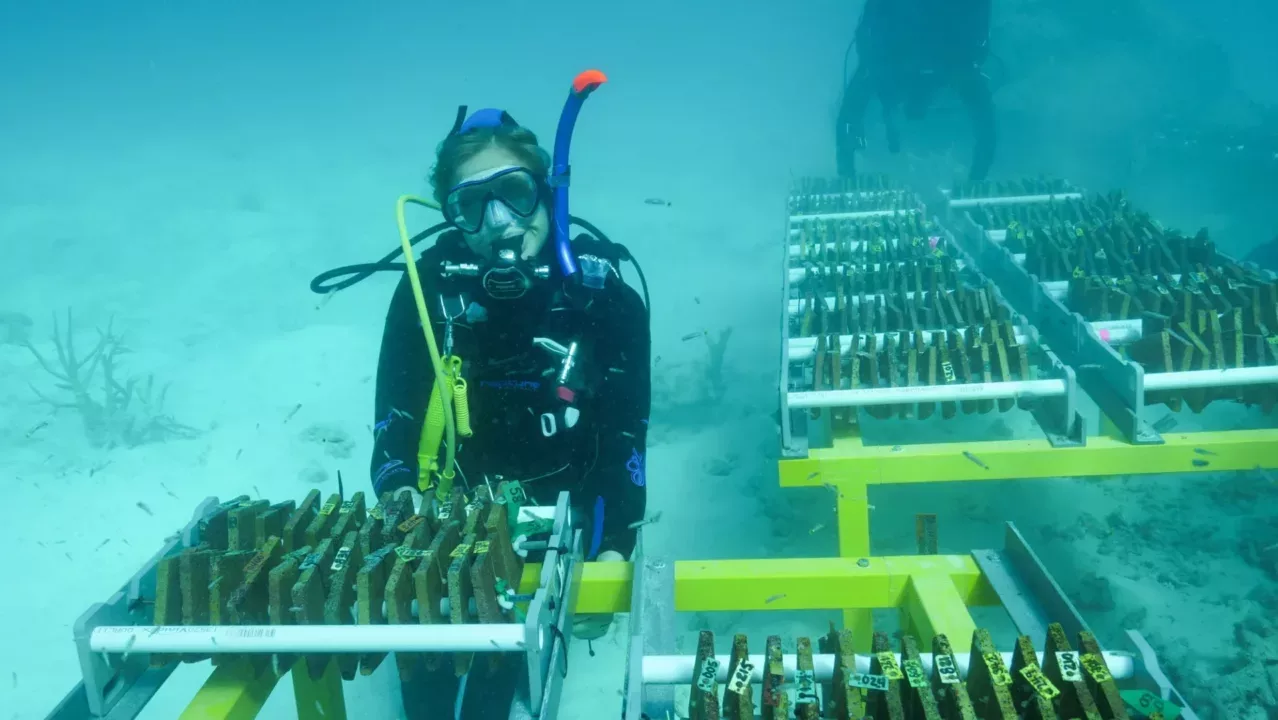Intervention to protect the Great Barrier Reef and help it adapt to climate change is possible and could double the likelihood of sustaining the Reef in good condition by 2050, according to the world’s most rigorous and comprehensive investigation into reef restoration and adaptation.
In 2018, the Australian Government provided $6M to the Reef Restoration and Adaptation Program (RRAP), a collaboration of more than 150 scientists, engineers, reef managers, modellers and other experts to examine the feasibility of intervention at scale to help preserve and restore the Great Barrier Reef.
The RRAP Investment Case, recently released, details key findings of the study and outlines the integrated research and development (R&D) program required to develop, test and, if necessary, deploy novel interventions to help keep the Reef resilient and sustain its critical functions and values.
The RRAP consortium, led by the Australian Institute of Marine Science (AIMS), includes CSIRO, the Great Barrier Reef Marine Park Authority, The University of Queensland, Queensland University of Technology, James Cook University and the Great Barrier Reef Foundation.
AIMS CEO and Chair of the RRAP Executive Committee during the concept feasibility study, Dr Paul Hardisty, said the study found there was no ‘silver bullet’ solution, and only a narrow window of opportunity within which to act.
“Over 18 months, more than 150 experts from more than 20 organisations across the world evaluated all existing research and technology in this area, improved understanding of forecast Reef declines and the types and scales of possible interventions required and measured social acceptability and regulatory requirements of at-scale intervention,” he said.
“The RRAP R&D Program aims to provide reef managers and decision-makers with an innovative and integrated toolkit of safe, acceptable interventions that would work together to create compounding benefits to help protect the Reef from the impacts of climate change.
“This toolkit would take a three-point approach: cooling and shading to help protect the Reef; assisting coral species to evolve and adapt to the rapidly changing environment; and, where necessary, helping to trigger and support natural recovery of damaged and degraded reefs.
“We found these interventions would need to be combined with best-practice conventional reef management and reduced carbon emissions to maximise their effectiveness.
“The R&D program will rigorously test and risk-assess potential interventions, including on-reef trials, to achieve the best outcomes under a wide range of possible climate change scenarios.
“The longer we wait, the more expensive and difficult it will be to successfully intervene at any scale, and the greater the risk the window of opportunity will close.”
Dr Hardisty said the R&D program was a bold and ambitious undertaking.
“It will require not only our best minds working in partnership across many organisations and fields of expertise, but importantly, the input and support of Traditional Owners, reef communities and industries, and the wider Australian public,” he said.
“Potential returns to Australia are conservatively estimated to be in the tens of billions of dollars, and much of this will flow to regional economies—including those of Indigenous Australians and Traditional Owners—in the form of economic activity, jobs, community development and capacity-building.
“The program will place Australia as the global leader in coral reef adaptation and restoration, opening opportunities to partner internationally and export our know-how.”
The RRAP Research and Development Program, to begin in the second half of 2020, will be funded through the $100M allocated for reef restoration and adaptation science as part of the $443.3M partnership between the Australian Government’s Reef Trust and the Great Barrier Reef Foundation. This will be supplemented with $100M each from philanthropy and research providers.
The RRAP Investment Case was informed by 18 technical and recommendations reports including:
- a review of 160 potential interventions and an assessment of their potential benefits and risks and knowledge gaps
- intervention analysis and recommendations
- Opportunities for international engagement and partnering
- A summary of the findings of the environmental and economic modelling analyses undertaken in the RRAP Concept Feasibility Program.

